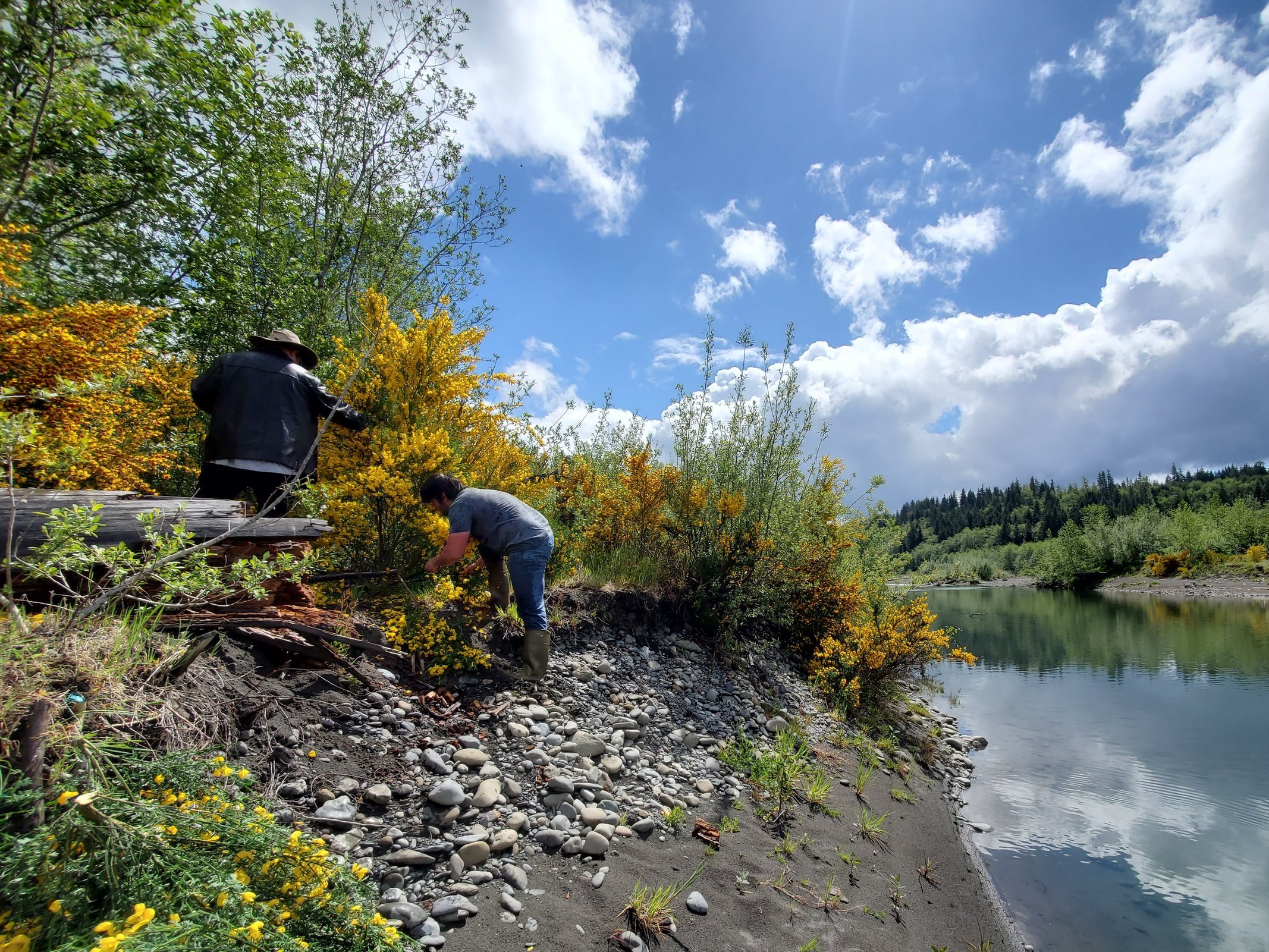
Scotch Broom
Prevention & Control
Why It Matters
Forest Health and Wildlife
Scotch broom is a threat to timber regeneration and forest habitat structure, functions, and biodiversity. Scotch broom outcompetes native plant species, altering water availability, soil nutrients, and introducing allelopathic chemicals. It is unpalatable and slightly toxic to grazers, replaces plants required by many native pollinators, and reduces nesting habitat for birds.
Wildfire Risk
Scotch broom is highly flammable and is a serious fire hazard. Just as it is critical to put fires out when they’re small, it’s crucial we prevent a highly flammable and invasive species like Scotch broom from spreading throughout Washington State.
Climate Change and Riverine Habitats
Climate change and melting glaciers increase sediment flux in rivers, increasing bank erosion and requiring road repair. Materials and equipment used for bank revetments often introduce Scotch broom seeds, which establish and spread on river gravel bars and floodplains. Scotch broom prevents the establishment of early- and late-successional trees that contribute to carbon sequestration, root stability along banks, and that add large wood and structure to channels.
Current Management
10,000 Years Institute’s Pulling Together in Restoration project works to prevent the spread of Scotch broom and other invasive species in coastal watersheds, while providing local jobs for local work.
Coastal Conservation Corps
Currently in development, this program will deliver well-paying, year-round jobs supporting forestry, fisheries, agriculture, and recreation to people who want to remain on the coast and build careers caring for the places they call home.
Check out the Coastal Conservation Corps & Biomass Optimization Center Program Development presentation.
More to come!
Contact us for more details at (360) 301-4306 or email jsilver@10000yearsinstitute.org.




